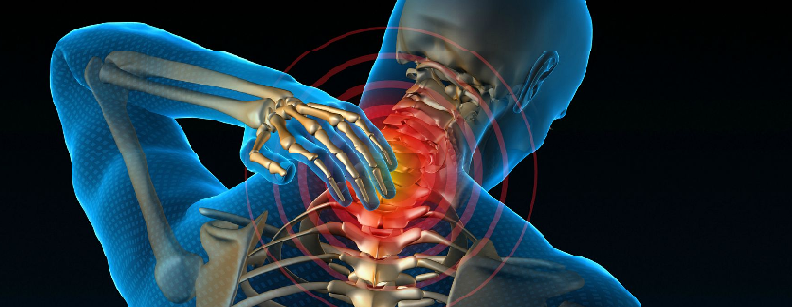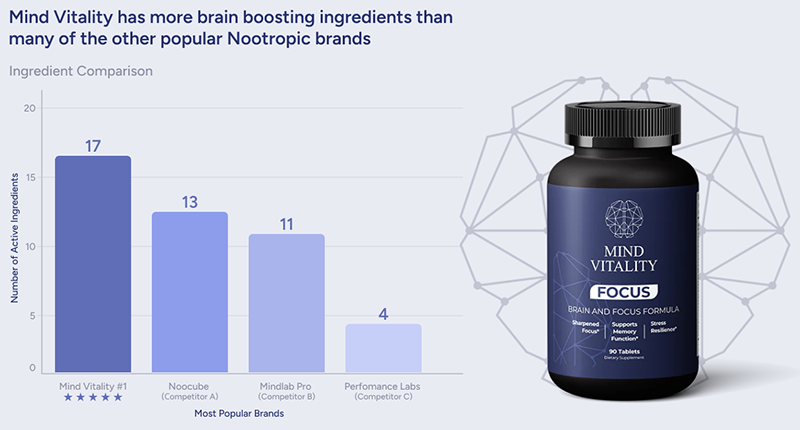In today’s fast-paced world, many people are seeking natural alternatives for managing pain and inflammation. Palmitoylethanolamide (PEA) is a fatty acid that has recently gained attention for its potential health benefits, particularly in the realm of pain relief and inflammation reduction. Here we delve into the world of PEA, exploring its properties, how it functions in the body, and the latest research on its potential applications.
Contents
Understanding Natural Pain Relief Options
As the prevalence of chronic pain and inflammation-related conditions continues to rise, more and more individuals are seeking natural alternatives to conventional pain relief methods. Natural pain relief options can provide a complementary or alternative approach to pain management, with the potential for fewer side effects compared to pharmaceutical drugs. Below are some of the most popular natural pain relief options available.
Herbal and Plant-Based Remedies
Many plants have been traditionally used for their pain-relieving and anti-inflammatory properties. Some well-known examples include turmeric (curcumin), ginger, willow bark, and arnica. These natural remedies can be consumed as teas, supplements, or applied topically as creams or ointments. While they may offer relief for some individuals, the effectiveness of these remedies can vary, and more research is needed to fully understand their potential benefits and optimal dosages.
Essential Oils
Essential oils, derived from various plants, have been used for centuries for their potential therapeutic properties. Some essential oils, such as lavender, peppermint, and eucalyptus, are believed to provide pain relief and reduce inflammation when inhaled, applied topically, or used in massages. However, it is important to note that essential oils should be used with caution, as they can cause skin irritation or allergic reactions in some people.
Acupuncture
Acupuncture is an ancient Chinese practice that involves the insertion of thin needles at specific points on the body to help alleviate pain and promote overall well-being. Some studies suggest that acupuncture may be effective in managing certain types of pain, such as chronic lower back pain and headaches. However, more research is needed to determine its efficacy for other pain-related conditions.
Mind-Body Therapies
Mind-body therapies, such as meditation, mindfulness, yoga, and tai chi, aim to reduce pain and inflammation by promoting relaxation and enhancing the mind-body connection. These practices have been shown to help manage chronic pain and improve quality of life for some individuals. While mind-body therapies may not work for everyone, they can be a valuable addition to a comprehensive pain management plan.
Dietary Changes and Supplements
Certain dietary changes and supplements may help reduce inflammation and provide pain relief. For instance, adopting an anti-inflammatory diet, rich in fruits, vegetables, whole grains, and healthy fats, can help manage inflammation-related pain. Some supplements, like omega-3 fatty acids and magnesium, have also been shown to offer pain relief benefits for certain individuals.

What is Palmitoylethanolamide (PEA)?
Palmitoylethanolamide, or PEA for short, is a naturally occurring compound that has recently attracted attention for its potential pain-relieving and anti-inflammatory properties.
PEA is a type of fatty acid amide, a group of lipid molecules found in nature. Its chemical structure is composed of a fatty acid (palmitic acid) connected to an ethanolamine molecule. This unique configuration enables PEA to play a vital role in cellular signaling and the regulation of various biological processes.
The human body produces PEA in small quantities, and it can also be found in several external sources. Some examples of natural sources of PEA include egg yolks, soy lecithin, peanuts, and certain meat products. However, it is important to note that dietary sources of PEA are typically insufficient to provide therapeutic levels of the compound. As a result, PEA supplements are often recommended for those seeking to take advantage of its health benefits.
Within the body, PEA serves as an endogenous signaling molecule involved in modulating inflammation and pain perception. It is primarily produced and metabolized by immune cells, neurons, and glial cells in response to tissue damage, inflammation, or stress.
PEA’s effects are achieved by binding to specific cellular receptors, such as the peroxisome proliferator-activated receptor alpha (PPAR-α), and indirectly modulating other receptors involved in pain and inflammation, such as the cannabinoid-like G protein-coupled receptors (GPCRs). This modulation helps restore cellular homeostasis and reduce the production of pro-inflammatory mediators.
The main health benefits of PEA are attributed to its anti-inflammatory and analgesic (pain-relieving) properties. Research has demonstrated that PEA may be helpful in managing various types of pain, including neuropathic pain, chronic pain, and inflammatory pain.
Additionally, PEA has been investigated for its potential use in a range of conditions, such as fibromyalgia, multiple sclerosis, and sciatica. Some studies even suggest that PEA might possess neuroprotective properties, offering potential benefits for neurodegenerative disorders.

PEA’s Anti-inflammatory and Analgesic Properties
Palmitoylethanolamide (PEA) has garnered significant interest due to its potential to alleviate pain and reduce inflammation. PEA’s anti-inflammatory and analgesic effects are attributed to its ability to modulate cellular signaling and target specific receptors involved in the body’s response to inflammation and pain. There are a few key mechanisms through which PEA exerts its effects.
Activation of Peroxisome Proliferator-Activated Receptor Alpha (PPAR-α)
PEA binds to PPAR-α, a nuclear receptor that regulates the expression of various genes involved in inflammation, lipid metabolism, and energy homeostasis. The activation of PPAR-α by PEA helps to suppress the production of pro-inflammatory mediators and cytokines, leading to reduced inflammation.
Modulation of Mast Cells and Glial Cells
Mast cells and glial cells play crucial roles in the body’s inflammatory response and pain perception. PEA helps to stabilize mast cells, preventing the release of histamine and other pro-inflammatory mediators. In addition, PEA has been shown to attenuate the activation of glial cells, which can contribute to chronic pain states when over-activated.
Indirect Modulation of Other Receptors
PEA may also indirectly influence other receptors involved in pain and inflammation, such as the cannabinoid-like G protein-coupled receptors (GPCRs) and transient receptor potential vanilloid 1 (TRPV1) channels. These interactions contribute to PEA’s overall pain-relieving and anti-inflammatory effects.
Research on PEA’s Health Benefits
The growing body of research on Palmitoylethanolamide (PEA) has generated considerable interest in its potential health benefits. The key findings on PEA’s pain-relieving and anti-inflammatory effects are listed here.
Neuropathic Pain
Neuropathic pain, a type of chronic pain resulting from damage to or dysfunction of the nervous system, can be challenging to manage and significantly impact an individual’s quality of life. Palmitoylethanolamide (PEA) has emerged as a promising natural compound for the management of neuropathic pain. Key findings from research on PEA and neuropathic pain include:
- Animal studies: Numerous animal studies have demonstrated PEA’s effectiveness in reducing neuropathic pain. These studies have shown that PEA can decrease the activation of glial cells and suppress the production of pro-inflammatory cytokines, resulting in reduced pain sensitivity in animal models of nerve injury and diabetic neuropathy.
- Clinical trials: Several clinical trials have reported positive results with PEA supplementation for neuropathic pain management. A study published in the journal Pain Medicine found that PEA treatment led to significant reductions in pain intensity and improved quality of life in patients with diabetic neuropathy. Another study, published in the Journal of Pain Research, reported that PEA supplementation resulted in significant improvements in pain scores and nerve function among patients with chemotherapy-induced peripheral neuropathy.
- Systematic reviews and meta-analyses: A systematic review and meta-analysis published in the British Journal of Clinical Pharmacology concluded that PEA was effective in reducing pain intensity in patients with various types of neuropathic pain, with a favorable safety profile.
Chronic Pain and Inflammatory Pain
Chronic pain and inflammatory pain can significantly impact an individual’s quality of life, making it crucial to explore effective treatment options. Palmitoylethanolamide (PEA) has shown promise as a natural compound for managing chronic and inflammatory pain. Key findings from research on PEA and chronic pain and inflammatory pain:
- Fibromyalgia: A study published in the Journal of Pain Research reported that PEA supplementation led to significant improvements in pain scores and overall quality of life among patients with fibromyalgia. The study also found that PEA treatment was well-tolerated, with few side effects.
- Osteoarthritis: Research has shown that PEA can be beneficial in managing pain related to osteoarthritis. A clinical trial published in the European Journal of Pain found that PEA supplementation resulted in significant improvements in pain and function among patients with knee osteoarthritis.
- Lower back pain: PEA has also been studied for its potential to alleviate lower back pain. A study published in the journal Pain Physician reported that PEA treatment led to significant reductions in pain intensity and improved functional outcomes in patients with nonspecific lower back pain.
Other Conditions
Palmitoylethanolamide (PEA) has shown promise as a natural compound not only for pain management but also for various other health conditions.
- Multiple Sclerosis: Multiple sclerosis (MS) is a chronic autoimmune disorder affecting the central nervous system. Some research suggests that PEA’s anti-inflammatory and immunomodulatory properties may have potential benefits for individuals with MS. A study published in the Journal of Neuroinflammation found that PEA treatment reduced inflammation and demyelination in an animal model of MS. However, more research, including human clinical trials, is needed to confirm PEA’s effectiveness in managing MS symptoms and progression.
- Sciatica: Sciatica is a painful condition caused by the compression or irritation of the sciatic nerve. A study published in the Journal of Pain Research reported that PEA supplementation led to significant improvements in pain and function among patients with lumbar radiculopathy, a common cause of sciatica. These findings suggest that PEA may be a promising treatment option for sciatica, but further research is needed to confirm its efficacy and determine optimal dosages.
- Irritable Bowel Syndrome (IBS): IBS is a common gastrointestinal disorder characterized by abdominal pain, bloating, and altered bowel habits. Some research suggests that PEA may be beneficial for individuals with IBS due to its anti-inflammatory properties and ability to stabilize mast cells. A study published in the United European Gastroenterology Journal found that PEA treatment improved abdominal pain and bowel habits in patients with IBS. However, additional research is required to confirm these findings and establish the optimal PEA dosage for IBS management.
- Migraines: PEA’s potential benefits for migraine management have also been investigated, given its anti-inflammatory and pain-relieving properties. A preliminary study published in the Journal of Headache and Pain reported that PEA supplementation reduced the frequency and intensity of migraines in a small group of patients. While these results are promising, larger and more rigorous clinical trials are needed to confirm PEA’s effectiveness in migraine management.

How to Use PEA as a Supplement
Palmitoylethanolamide (PEA) has shown promise as a natural compound for managing pain and inflammation, as well as offering potential benefits for various other health conditions. If you’re considering adding PEA to your supplement regimen, it’s essential to understand how to use it safely and effectively.
PEA Recommended Dosages
PEA dosages can vary depending on factors such as the specific health condition being addressed and individual factors. In general, daily dosages of PEA used in clinical studies have ranged from 300 mg to 1,000 mg, typically divided into two or three doses.
Forms of PEA Supplements
PEA supplements are available in various forms, including capsules, tablets, and powders. The most common form is micronized and ultra-micronized PEA, which has a smaller particle size and is believed to have better absorption and bioavailability. Some PEA supplements may also be combined with other ingredients, such as antioxidants or other anti-inflammatory compounds, to enhance their effects. Choose the form that best suits your preferences and convenience.
PEA Potential Side Effects and Safety Concerns
PEA is generally considered safe and well-tolerated, with few reported side effects. However, some individuals may experience mild gastrointestinal symptoms, such as nausea, stomach pain, or diarrhea. These side effects are typically mild and transient. It’s important to consult with a healthcare professional before starting PEA supplementation, particularly if you are taking medications or have pre-existing health conditions. Pregnant and breastfeeding women should also consult with a healthcare professional before using PEA supplements.
Tips for Choosing a High-Quality PEA Supplement
When selecting a PEA supplement, consider the following factors to ensure you’re choosing a high-quality product:
- Purity: Look for a product that contains pure PEA without any unnecessary additives or fillers.
- Micronization: Choose a micronized or ultra-micronized PEA supplement to ensure better absorption and bioavailability.
- Third-party testing: Select a product that has been independently tested for purity, potency, and quality by a reputable third-party laboratory.
- Brand reputation: Opt for a reputable brand with a track record of producing high-quality supplements and a commitment to transparency and customer satisfaction.
- Label transparency: Verify that the product label clearly lists the amount of PEA per serving and any other ingredients included in the supplement.






